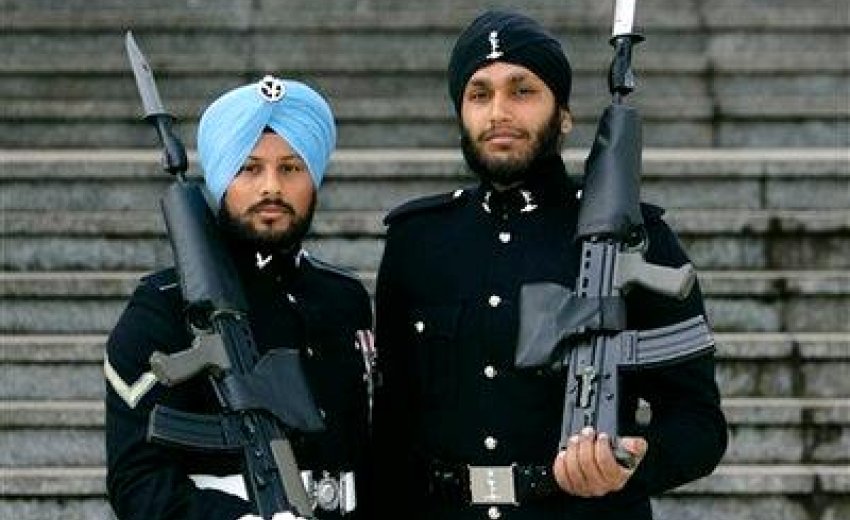Queen Elizabeth II made a notable change as she replaced the traditional bearskin hats with turbans for the guards outside Buckingham Palace. The British Defence Ministry made this announcement in 2009.
Signaler Simranjit Singh and Lance Cpl. Sarvjit Singh created history by becoming the first Sikhs to participate in guarding the queen's residence and overseeing the protection of the Crown jewels at the Tower of London, located across town.
Usually, the Guard duties are performed by the Guards of the Household Division, who are widely recognised for their distinctive bearskin hats and eye-catching crimson coats that draw thousands of tourists seeking memorable photos. However, the defence ministry disclosed that Sikh soldiers were now adorning turbans and blue uniforms for these duties.
In cases where the Household Division is engaged in operations elsewhere, various army regiments often step in to fulfil guard duties at Buckingham Palace. The defence ministry proudly shared that these two Sikh soldiers were the first members among the 90 Sikhs serving in Britain's army to be entrusted with this significant responsibility.
Commenting on the change, a defence ministry spokeswoman said, "It's purely a coincidence that this has happened now. Regiments take it in turn to stand in for the Household Division and it just happens that two of the soldiers this time round are Sikh."
The Sikh soldier guards
Sarvjit Singh, who was born in India and served in the 3 Regiment Army Air Corps, expressed his excitement at the opportunity to guard the queen in the past. The 28-year-old said that being a Sikh on the queen's guard was an experience beyond words, describing it as a once-in-a-lifetime honour.
Simranjit Singh, aged 26, from Coventry in central England, who was attached to the 21 Signal Regiment (Air Support), shared that being in London and parading in front of hundreds of people had been wonderful. He noted that his Sikh background had not made any difference, and although the role involved hard work, it was definitely worth it.
He added that the most challenging part of their duty was maintaining absolute stillness while on sentry duty outside the queen's home.
Historically, Sikhs had a significant presence in guarding British royalty, including Queen Victoria during India's colonial period. It's important to note that during World War I, Sikhs constituted around 20 percent of the British army, but their numbers declined after India gained independence.
*Based on an article published on Yahoo News on 5th August 2009
